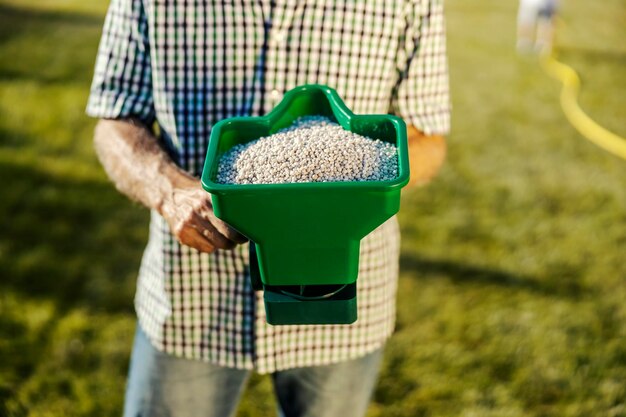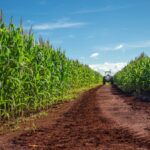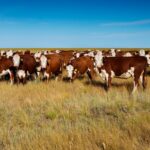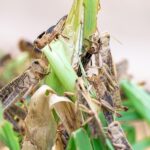Fertilizer application is a vital part of modern farming, directly impacting crop yields and soil fertility. However, inefficient fertilizer distribution can lead to wasted resources, uneven crop growth, and environmental degradation. South African farmers, faced with rising input costs and sustainability demands, can greatly benefit from optimizing yield using efficient fertilizer distribution equipment. This article explores strategies to achieve this goal while minimizing costs and environmental impact.
The Importance of Efficient Fertilizer Distribution
Fertilizers provide essential nutrients like nitrogen, phosphorus, and potassium that crops need to grow. However, improper application can result in:
- Nutrient Imbalances: Over- or under-fertilization causes uneven growth and reduces crop quality.
- Wastage: Excess fertilizer often leaches into the soil or runs off, leading to environmental pollution and increased costs.
- Soil Degradation: Incorrect application methods can harm soil health, reducing its long-term productivity.
Using efficient fertilizer distribution equipment helps ensure that nutrients are evenly spread, improving crop health, optimizing yields, and conserving resources.
Types of Fertilizer Distribution Equipment
- Broadcast Spreaders
Broadcast spreaders distribute granular fertilizers over a wide area. They are ideal for large fields and can be tractor-mounted or hand-held, depending on the farm size. - Drop Spreaders
Drop spreaders provide precision by dropping fertilizer directly below the equipment, making them suitable for row crops or smaller fields. - Liquid Fertilizer Applicators
These are used to apply liquid fertilizers directly to the soil or foliage, ensuring targeted nutrient delivery. - Fertilizer Injectors
Commonly used in irrigation systems, injectors mix fertilizers with water, delivering nutrients directly to the root zone. - Variable Rate Applicators (VRA)
These advanced systems use GPS and sensors to adjust the fertilizer application rate based on the specific needs of different areas within a field, optimizing nutrient use and yield.
Steps to Optimize Yield with Fertilizer Distribution Equipment
- Conduct Soil Testing
Before applying fertilizers, test the soil to identify nutrient deficiencies and determine the appropriate fertilizer type and quantity. This ensures you address specific crop needs without overloading the soil. - Choose the Right Equipment
Select equipment based on your farm’s size, crop type, and fertilizer requirements. For example:
- Use broadcast spreaders for large-scale fields.
- Opt for drop spreaders for precision in smaller or irregularly shaped areas.
- Invest in VRAs for high-tech precision farming.
- Calibrate Your Equipment
Improper calibration leads to uneven distribution, affecting yield and wasting fertilizer. Regularly check and adjust your equipment to ensure accurate application rates. - Practice Precision Agriculture
Leverage technologies like GPS, drones, and sensors to map your fields and identify areas with varying nutrient needs. Use this data to apply fertilizers precisely where they are needed. - Optimize Timing
Apply fertilizers at the right time to match the crop’s growth stages. For example, nitrogen is most effective during the vegetative stage when crops require it for leaf development. - Adopt Split Applications
Instead of applying all the fertilizer at once, split applications into smaller doses during the growing season. This reduces nutrient losses and ensures a steady supply of nutrients to the crops. - Minimize Overlaps and Missed Spots
Inefficient application can cause overlaps, resulting in over-fertilization, or missed spots, leading to nutrient deficiencies. Use markers or GPS-guided equipment to avoid these issues. - Train Workers on Equipment Use
Workers should understand how to operate and maintain fertilizer distribution equipment. Provide training on calibration, application techniques, and safety protocols. - Perform Regular Maintenance
Ensure your equipment remains in good working condition by cleaning and servicing it regularly. This prevents malfunctions that could affect application accuracy. - Monitor and Adjust
After fertilization, monitor crop performance and soil health. If results are below expectations, adjust application rates or equipment settings accordingly.
Benefits of Efficient Fertilizer Distribution
- Increased Yields: Even nutrient distribution promotes uniform crop growth and higher yields.
- Cost Savings: Precise application reduces fertilizer waste, lowering input costs.
- Environmental Protection: Minimizing runoff and leaching reduces the risk of water pollution.
- Enhanced Soil Health: Proper application prevents nutrient imbalances and maintains soil fertility.
Efficient fertilizer distribution is key to optimizing yields and maintaining sustainable farming practices. By investing in the right equipment, adopting precision agriculture techniques, and continuously monitoring and adjusting practices, South African farmers can achieve better productivity while conserving resources. With the right approach, fertilizer becomes a powerful tool for improving both crop performance and environmental stewardship.
Join 'Farmers Mag' WhatsApp Channel
Get the latest Farming news and tips delivered straight to your WhatsApp
CLICK HERE TO JOIN






